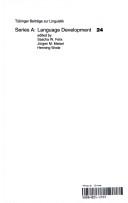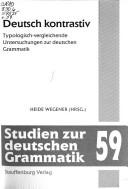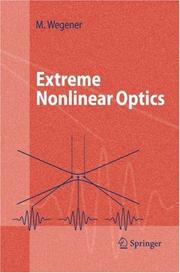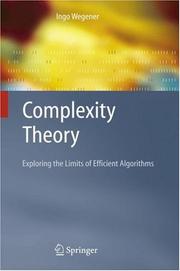| Listing 1 - 10 of 756 | << page >> |
Sort by
|
Digital
Year: 1842 Publisher: Bruges Vandecasteele-Werbrouck
Abstract | Keywords | Export | Availability | Bookmark
 Loading...
Loading...Choose an application
- Reference Manager
- EndNote
- RefWorks (Direct export to RefWorks)
Book
Publisher: Bruges : Vandecasteele-Werbrouck,
Abstract | Keywords | Export | Availability | Bookmark
 Loading...
Loading...Choose an application
- Reference Manager
- EndNote
- RefWorks (Direct export to RefWorks)
Book
Year: 1995 Publisher: Berlin Kunsthandel Wolfgang Werner KG
Abstract | Keywords | Export | Availability | Bookmark
 Loading...
Loading...Choose an application
- Reference Manager
- EndNote
- RefWorks (Direct export to RefWorks)
Book
Abstract | Keywords | Export | Availability | Bookmark
 Loading...
Loading...Choose an application
- Reference Manager
- EndNote
- RefWorks (Direct export to RefWorks)

ISBN: 3823347217 9783823347217 Year: 1998 Volume: 24 Publisher: Tübingen Narr
Abstract | Keywords | Export | Availability | Bookmark
 Loading...
Loading...Choose an application
- Reference Manager
- EndNote
- RefWorks (Direct export to RefWorks)
Psycholinguistics --- Second language acquisition --- Acquisition d'une seconde langue

ISBN: 3860574493 9783860574492 Year: 1999 Volume: 59 Publisher: Tübingen Stauffenburg
Abstract | Keywords | Export | Availability | Bookmark
 Loading...
Loading...Choose an application
- Reference Manager
- EndNote
- RefWorks (Direct export to RefWorks)
Comparative linguistics --- Grammar --- German language --- Grammar, Comparative --- -Ashkenazic German language --- Hochdeutsch --- Judaeo-German language (German) --- Judendeutsch language --- Judeo-German language (German) --- Jüdisch-Deutsch language --- Jüdischdeutsch language --- Germanic languages --- -Grammar, Comparative --- Ashkenazic German language --- German language - Grammar, Comparative - Congresses. --- DEUTSCHE SPRACHE --- TYPOLOGIE (LINGUISTIQUE) --- SYNTAX
Book
ISBN: 3810012548 Year: 1994 Publisher: Opladen Leske & Budrich
Abstract | Keywords | Export | Availability | Bookmark
 Loading...
Loading...Choose an application
- Reference Manager
- EndNote
- RefWorks (Direct export to RefWorks)
Mass communications --- Social psychology --- 316.773.33 --- 654.197 --- Criminal investigation in mass media --- Documentary television programs --- Television --- -Television --- -#SBIB:309H1521 --- #SBIB:309H1523 --- Radio vision --- TV --- Artificial satellites in telecommunication --- Electronic systems --- Optoelectronic devices --- Telecommunication --- Astronautics --- Documentaries, Television --- Documentary programs, Television --- Telementaries --- Television documentaries --- Television documentary programs --- Documentary mass media --- Nonfiction television programs --- Mass media --- Informatieve boodschap. Voorlichting--(communicatiesociologie) --- Facsimile and television broadcasting --- Psychological aspects --- Social aspects --- Radio- en/of televisieprogramma’s met een amusementsfunctie en/of esthetische functie --- Radio- en/of televisieprogramma's met een informatieve functie --- Optical communication systems --- Criminal investigation in mass media. --- History and criticism. --- Psychological aspects. --- Social aspects. --- 654.197 Facsimile and television broadcasting --- 316.773.33 Informatieve boodschap. Voorlichting--(communicatiesociologie) --- #SBIB:309H1521 --- Television broadcasting --- History and criticism
Book
ISSN: 03446778 ISBN: 3484311517 3110952238 9783484311510 Year: 1995 Volume: 151 Publisher: Tübingen Niemeyer
Abstract | Keywords | Export | Availability | Bookmark
 Loading...
Loading...Choose an application
- Reference Manager
- EndNote
- RefWorks (Direct export to RefWorks)
Die Untersuchung stellt die Kategorien der Nominalflexion des Deutschen unter dem Gesichtspunkt dar, wie die morphologische Realisierung von Numerus, Genus und Kasus an Nomen, Artikel, Adjektiv und Pronomen vom Lerner im natürlichen Deutsch-als-Zweitsprache-Erwerb erkannt und erlernt werden kann. Dazu werden zunächst die semantischen und syntaktischen Funktionen der einzelnen Kategorien aufgezeigt und die Systematizität der Flexionsparadigmen dargelegt, soweit eine solche im heutigen Deutsch noch gegeben ist, d.h. hier werden Regularitäten und Irregularitäten der Flexionsmorphologie dargestellt und dabei auch derzeit zu beobachtende Veränderungen im Flexionssystem berücksichtigt. Sodann wird für die einzelnen Flexive deren Validität, Salienz und Frequenz untersucht, für die Flexionsregeln deren Validität und Skopus auf der Basis eines Grundwortschatzes errechnet. Auf der Grundlage der Generativen Morphologie, insbesondere der Markiertheitstheorie, werden unmarkiert-reguläre, markiert-reguläre und irreguläre Formen unterschieden und deren Lernbarkeit nach unterschiedlichen Erwerbsstrategien diskutiert. Ziel ist, die Komplexität der deutschen Nominalflexion zu erklären und damit eine der Hauptschwierigkeiten der ausländischen Lerner transparenter zu machen. Kurzgefaßte didaktische Überlegungen und konkrete Vorschläge beschließen jeweils die linguistisch-deskriptiv orientierten Kapitel. Die Ergebnisse sind nicht nur für jeden, der mit DaZ-Erwerb und DaF-Unterricht zu tun hat, also für Psycholinguisten und Spracherwerbsforscher, Didaktiker und Lehrwerkautoren bzw. Lehrer von Interesse, sondern können auch dem 'nur' an Grammatik interessierten Germanisten das Phänomen der deutschen Nominalflexion neu und anders, nämlich aus der Lernerperspektive heraus, eröffnen.
Grammar --- German language --- -German language --- -Declension --- Study and teaching --- Noun --- Declension. --- Noun. --- Study and teaching. --- -Ashkenazic German language --- Hochdeutsch --- Judaeo-German language (German) --- Judendeutsch language --- Judeo-German language (German) --- Jüdisch-Deutsch language --- Jüdischdeutsch language --- Germanic languages --- Declension --- Ashkenazic German language --- German language - Declension --- German language - Study and teaching --- German language - Noun

ISSN: 14392674 ISBN: 354022291X 3642060900 3540266887 9783540222910 Year: 2005 Publisher: Berlin, Heidelberg : Springer Berlin Heidelberg : Imprint: Springer,
Abstract | Keywords | Export | Availability | Bookmark
 Loading...
Loading...Choose an application
- Reference Manager
- EndNote
- RefWorks (Direct export to RefWorks)
Following the birth of the laser in 1960, the field of "nonlinear optics" rapidly emerged. Today, laser intensities and pulse durations are readily available, for which the concepts and approximations of traditional nonlinear optics no longer apply. In this regime of "extreme nonlinear optics," a large variety of novel and unusual effects arise, for example frequency doubling in inversion symmetric materials or high-harmonic generation in gases, which can lead to attosecond electromagnetic pulses or pulse trains. Other examples of "extreme nonlinear optics" cover diverse areas such as solid-state physics, atomic physics, relativistic free electrons in a vacuum and even the vacuum itself. This book starts with an introduction to the field based primarily on extensions of two famous textbook examples, namely the Lorentz oscillator model and the Drude model. Here the level of sophistication should be accessible to any undergraduate physics student. Many graphical illustrations and examples are given. The following chapters gradually guide the student towards the current "state of the art" and provide a comprehensive overview of the field. Every chapter is accompanied by exercises to deepen the reader's understanding of important topics, with detailed solutions at the end of the book.
Nonlinear optics --- Optique non linéaire --- Nonlinear optics. --- Light & Optics --- Physics --- Physical Sciences & Mathematics --- Optics. --- Optique non linéaire --- EPUB-LIV-FT LIVPHYSI SPRINGER-B --- Optics, Nonlinear --- Physics. --- Gravitation. --- Electrodynamics. --- Quantum optics. --- Statistical physics. --- Dynamical systems. --- Engineering. --- Optics and Electrodynamics. --- Engineering, general. --- Quantum Optics. --- Statistical Physics, Dynamical Systems and Complexity. --- Classical and Quantum Gravitation, Relativity Theory. --- Light --- Optics --- Lasers --- Classical Electrodynamics. --- Complex Systems. --- Statistical Physics and Dynamical Systems. --- Mathematical statistics --- Construction --- Industrial arts --- Technology --- Statistical methods --- Photons --- Quantum theory --- Field theory (Physics) --- Matter --- Antigravity --- Centrifugal force --- Relativity (Physics) --- Dynamical systems --- Kinetics --- Mathematics --- Mechanics, Analytic --- Force and energy --- Mechanics --- Statics --- Dynamics --- Properties --- Acqui 2006

ISBN: 3540210458 3642059147 3540274774 Year: 2005 Publisher: Berlin, Heidelberg : Springer Berlin Heidelberg : Imprint: Springer,
Abstract | Keywords | Export | Availability | Bookmark
 Loading...
Loading...Choose an application
- Reference Manager
- EndNote
- RefWorks (Direct export to RefWorks)
Complexity theory is the theory of determining the necessary resources for the solution of algorithmic problems and, therefore, the limits of what is possible with the available resources. An understanding of these limits prevents the search for non-existing efficient algorithms. This textbook considers randomization as a key concept and emphasizes the interplay between theory and practice: New branches of complexity theory continue to arise in response to new algorithmic concepts, and its results - such as the theory of NP-completeness - have influenced the development of all areas of computer science. The topics selected have implications for concrete applications, and the significance of complexity theory for today's computer science is stressed throughout.
Algorithms. --- Algorithmes --- Algorithms --- Computer Science --- Mathematical Theory --- Mathematics --- Engineering & Applied Sciences --- Physical Sciences & Mathematics --- Constructive mathematics. --- EPUB-LIV-FT LIVINFOR SPRINGER-B --- Mathematics, Constructive --- Algorism --- Computer science. --- Computer programming. --- Coding theory. --- Computer logic. --- Mathematical logic. --- Computer Science. --- Programming Techniques. --- Algorithm Analysis and Problem Complexity. --- Coding and Information Theory. --- Logics and Meanings of Programs. --- Mathematical Logic and Formal Languages. --- Algebra --- Arithmetic --- Foundations --- Logic, Symbolic and mathematical --- Computer software. --- Logic design. --- Data compression (Telecommunication) --- Digital electronics --- Information theory --- Machine theory --- Signal theory (Telecommunication) --- Computer programming --- Design, Logic --- Design of logic systems --- Electronic circuit design --- Logic circuits --- Switching theory --- Software, Computer --- Computer systems --- Informatics --- Science --- Information theory. --- Algebra of logic --- Logic, Universal --- Mathematical logic --- Symbolic and mathematical logic --- Symbolic logic --- Algebra, Abstract --- Metamathematics --- Set theory --- Syllogism --- Computer science logic --- Communication theory --- Communication --- Cybernetics --- Computers --- Electronic computer programming --- Electronic data processing --- Electronic digital computers --- Programming (Electronic computers) --- Coding theory --- Programming
| Listing 1 - 10 of 756 | << page >> |
Sort by
|

 Search
Search Feedback
Feedback About UniCat
About UniCat  Help
Help News
News